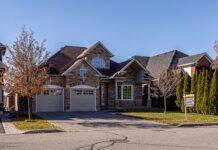U.S. home prices increased 0.2%, after seasonal adjustment, in June compared with May and increased 5.1% compared with June 2015, according to the S&P CoreLogic Case-Shiller Indices.
The 10-city composite and the 20-city composite both posted 0.1% decreases, on an adjusted basis, compared with May.
Year over year, the 10-city composite posted a 4.3% annual increase – down from 4.4% the previous month, while the 20-city composite reported a gain of 5.1%, down from 5.3% the previous month.
Before seasonal adjustment, the national index posted a month-over-month gain of 1.0%, while the 10-city composite and the 20-city composite each posted increases of 0.8% compared with May.
After seasonal adjustment, nine cities saw prices rise, two cities were unchanged, and nine cities experienced negative monthly prices changes.
Portland, Ore.; Seattle; and Denver reported the highest year-over-year gains among the 20 cities over each of the last five months.
Portland led the way with a 12.6% year-over-year increase, followed by Seattle at 11.0% and Denver with 9.2%.
“Home prices continued to rise across the country, led by the West and the South,” said David M. Blitzer, managing director and chairman of the index committee at S&P Dow Jones Indices, in a release. “In the strongest region, the Pacific Northwest, prices are rising at more than 10 percent; in the slower Northeast, prices are climbing a bit faster than inflation. Nationally, home prices have risen at a consistent 4.8 percent annual pace over the last two years without showing any signs of slowing.
“Overall, residential real estate and housing is in good shape,” Blitzer added. “Sales of existing homes are running at about 5.5 million units annually, with inventory levels under five months, indicating a fairly tight market. Sales of new single-family homes were at a 654,000 seasonally adjusted annual rate in July – the highest rate since November 2007.
“Housing starts in July topped an annual rate of 1.2 million units,” he continued. “While the real estate sector and consumer spending are contributing to economic growth, business capital spending continues to show weakness.”










